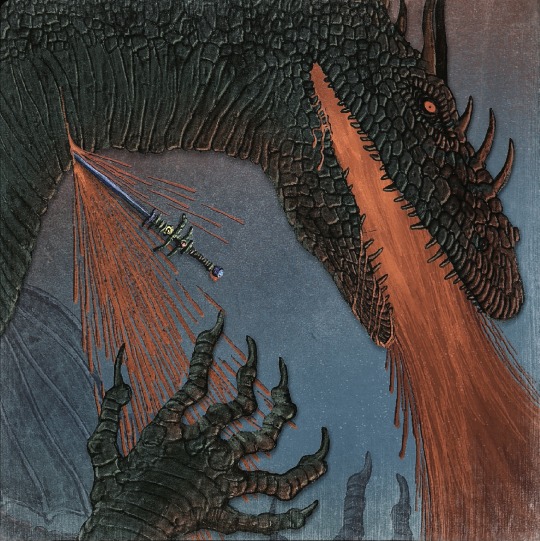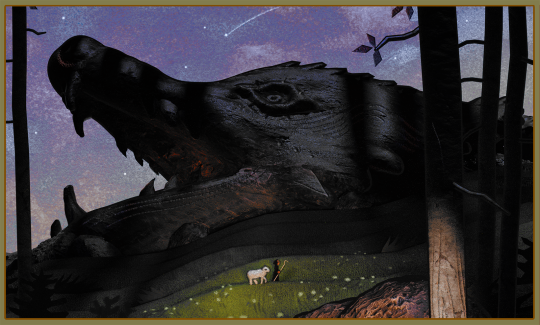Arthuriana & Greek Mythology side blog 🕊️⚰️
Last active 60 minutes ago
Don't wanna be here? Send us removal request.
Text

Edward Burne-Jones, The Legend of Briar Rose: the Rose Bower, 1890, oil/canvas (The Faringdon Collection Trust, Buscot Park)
9 notes
·
View notes
Text
I'm now reading another of Heidi Anne Heiner's fairy tale collections. Sleeping Beauties: Sleeping Beauty and Snow White Tales from Around the World. Since I enjoyed Cinderella Tales from Around the World so much, I couldn't resist opening another of Heiner's books.
The first part of the book is devoted to the different international versions of Sleeping Beauty, the second part to the different versions of Snow White. This is followed by other tales of "sleeping beauties" that don't fit nearly into either category.
We start with the medieval Sleeping Beauty prototype tales from the 13th and 14th centuries.
*The earliest known prototype of the Sleeping Beauty story is the Norse and Germanic legend of Brynhild (a.k.a. Brunhild, Brunhilda, Brünnhilde, or other variations). This legend first appears in the Poetic Edda, the Prose Edda, and the Volsunga Saga from 13th century Iceland. It also appears in the German Nibelungenlied (although that version doesn't include the enchanted sleep), and its most famous modern adaptation is in Richard Wagner's four-opera cycle Der Ring des Nibelungen. The figure of Brynhild also inspired the Marvel superheroine Valkyrie.
**The Sleeping Beauty-like portion of the legend is this. The beautiful and strong-willed Brynhild is one of the valkyries, the warrior maiden servants (and in some versions daughters) of Odin (or Woden, Wotan, etc.) who preside over battlefields and bring the souls of fallen heroes to Valhalla. But Brynhild disobeys Odin by saving (or trying to save) the life of a warrior who was marked for death. (The man's identity, why he was meant to die, why she defends him, and whether she succeeds in saving him or not varies between versions.) As punishment, Odin banishes her to the mortal realm, pricks her with a "sleep thorn," and places her in a castle (or just on a rock) surrounded by a ring of fire, condemning her to sleep until a man brave enough to venture through the flames arrives to wake her and become her husband. (In some versions, she has attendants and servants who all sleep along with her.) Many years later, the fearless hero Sigurd, or Siegfried, succeeds in passing unharmed through the flames and wakes Brynhild by cutting off her valkyrie armor (or in later retellings influenced by Sleeping Beauty, with a kiss). The couple doesn't live happily ever after, however: their further adventures and eventual tragic fates are a story for another day.
**Even though it's a well-known fact that in "the original Sleeping Beauty stories," the prince (or his counterpart) impregnates the sleeping heroine and she wakes after she gives birth, no such thing happens in this earliest proto-version. If we assume that this really is the Western world's first tale of a heroine in an enchanted sleep, then it seems as if that sordid detail was a later addition.
*Next in Heiner's book come several medieval French Sleeping Beauty tales, mostly from Arthurian romances. These are the tales where we first see the motif of the heroine's love interest raping her in her sleep and fathering a child. Since few of them have ever been translated into modern English, the book simply summarizes them instead of printing them in full.
**The best-known of these stories, which most resembles Sleeping Beauty as we know it today, is the tale of Troylus and Zellandine from Le Roman de Perceforest, an Arthurian romance from 14th or 15th century France. In this tale, a knight named Troylus loves a princess named Zellandine. Then he learns that while spinning, Zellandine has suddenly fallen into a deep sleep, from which no one can wake her. With the help of a spirit named Zephir and the goddess Venus, Troylus enters the tower where she lies and, at Venus's urging, he takes her virginity. Nine months later, Zellandine gives birth to a son, and when the baby sucks on her finger, she wakes. Zellandine's aunt now arrives, and reveals the whole backstory, which only she knew. When Zellandine was born, the goddesses Lucina, Themis, and Venus came to bless her. As was customary, a meal was set out for the three goddesses, but then the room was left empty so they could enter, dine, and give their blessings unseen; but the aunt hid behind the door and overheard them. Themis received a second-rate dinner knife compared to those of the other two, so she cursed the princess to someday catch a splinter of flax in her finger while spinning, fall into a deep sleep, and never awaken. But Venus altered the curse so that it could be broken and promised to ensure that it would be. When the baby sucked Zellandine's finger, he sucked out the splinter of flax. Eventually, Zellandine and Troylus reunite, marry, and become ancestors of Sir Lancelot.
***This tale provides some answers for questions that the traditional Sleeping Beauty raises. In the familiar tale, the king, the queen, and their court know about the curse, so why do they keep it a secret from the princess? Yes, they avoid upsetting her by doing so, but the end result is that when she finally sees a spindle, she doesn't know to beware of it. Why not warn her? And why is there a random old woman in the castle, spinning with presumably the kingdom's one spindle that wasn't destroyed, and why, despite living in the castle does she not know about the curse? (It's no wonder that most adaptations make her the fairy who cursed the princess in disguise.) Yet in this earlier version, there are no such questions: no one except the eavesdropping aunt knows about the curse, because it was cast in private, so no one can take precautions against it. Another standout details is the fact that Zellandine's sleep doesn't last for many years, and that the man who wakes her already loved her before she fell asleep. Disney didn't create those twists after all!
**The other medieval French Sleeping Beauty tales are Pandragus and Libanor (where Princess Libanor's enchanted sleep only lasts one night, just long enough for Pandragus to impregnate her), Brother of Joy and Sister of Pleasure (where the princess isn't asleep, but dead – yet somehow the prince still impregnates her – and is revived by an herb that a bird carries to her), and Blandin de Cornoalha (a knight who, refreshingly, doesn't impregnate the sleeping maiden Brianda, but breaks her spell by bringing a white hawk to her side).
*All of these early Sleeping Beauty tales are just one part of bigger poetic sagas. Maybe this explains why Sleeping Beauty is fairly light on plot compared to other famous fairy tales (i.e. we're told what's going to happen, and then it does happen, and it all seems inevitable from the start). Of course one argument is that it's a symbolic tale: symbolic of a young girl's coming-of-age, as the princess's childhood ends when she falls asleep and her adulthood begins when she wakes, and/or symbolic of the seasons, with the princess as a Persephone-like figure whose sleep represents winter and whose awakening represents spring. That's all valid. But maybe another reason for the flimsy plot is that the earliest versions of the tale were never meant to stand alone. They were just episodes in much longer and more complex narratives.
@ariel-seagull-wings, @adarkrainbow, @themousefromfantasyland
51 notes
·
View notes
Text

Edward Coley Burne-Jones (1833-1898, British) ~ The Prince Entering the Briar Wood (The Knights in "The Briar Rose"), n/d
[Source: Christie's]
322 notes
·
View notes
Text
the villagers: OH MY GOD GET OUT OF HERE ITS A DRAGON ATTACK HES BURNING DOWN THE WHOLE VILLAGE
me noticing the "dragon" actually only has 2 hind legs instead of 4 legs: thats actually a w-
*flames engulf me completely*
45K notes
·
View notes
Text
your racist uncle just bathed in dragons blood, rendering his flesh impenetrable by blade or bullet. luckily some divine force, call it entropy, pulled a leaf from its branch and let it rest on your uncles shoulder blade as he was bathing. you know what to do. find this spot, and drive the electronic turkey carver through it. it is your destiny
24K notes
·
View notes
Text

everyone else’s profiles on this faculty page include normal specializations like “the 19th-century british literature” “history of the book” “asian american studies” and then there is this guy
752 notes
·
View notes
Text

— Erica Jong, from “Mother.”
8K notes
·
View notes
Text
“One version of his end claims that Sir Mordred survived Camlann and was only later defeated by Sir Lancelot. Having executed Guinevere for compliance in plot against Arthur, the Knight of the Lake then incarcerated Mordred in the dead queen’s tomb. He cannibalized his former lover before dying of starvation!”

#is this real???#can I have the source#pls source#p l e a s e#I'm dying and only incestuous cannibalistic Mordred content can save me#arthuriana#mordred pendragon
24 notes
·
View notes
Note
C-section removal Mordred x Premature birth Loholt :3
Postterm pregnany Mordred x Premature birth Loholt 🩷 Mordred had a larger than average birth size and his birth required a C-section wheras Loholt was an easy delivery and caused his mother no pain but he was very small and sickly.
#Mordred didn't even want to born he just wanted to stay in his mother's womb forever#he already absorbed the mommy issues through the umbilical cord#answered asks
1 note
·
View note
Photo





Daddy (1973), dir. Niki de Saint Phalle, Peter Whitehead
258 notes
·
View notes
Text
Of course, I cannot actually talk about Paul O. Zelinsky and not complete his trilogy of fairytale works... With what I think was his most awarded work? His fabulous, Southern Renaissance-styled Rapunzel illustrations.






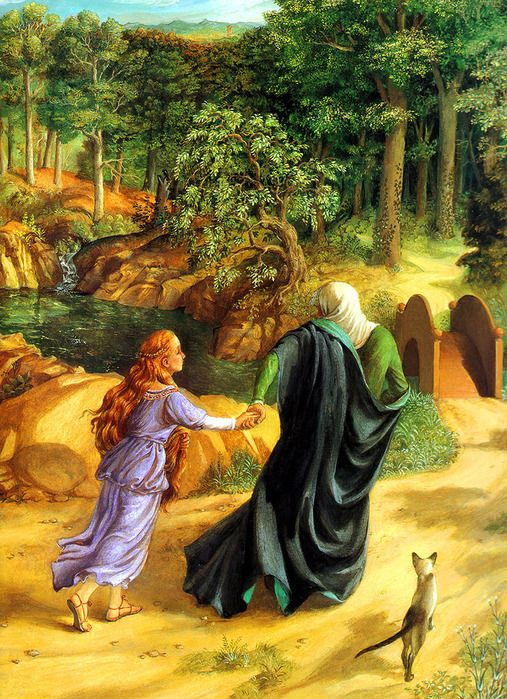
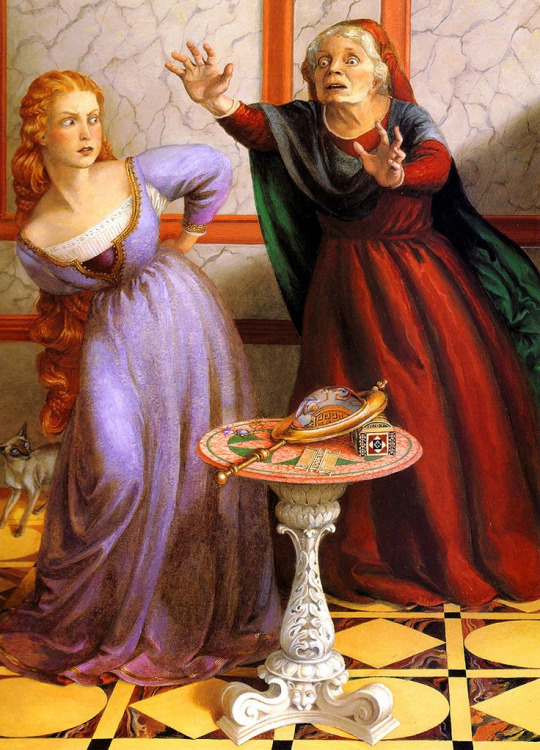


114 notes
·
View notes
Text
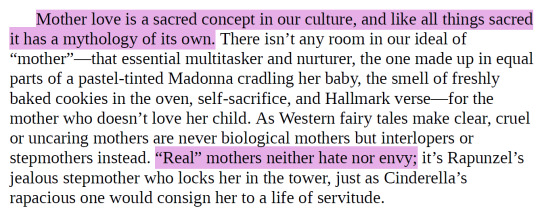
Peg Streep, Mean Mothers: Overcoming the Legacy of Hurt
22 notes
·
View notes
Text

My Mother, Bataille
116 notes
·
View notes
